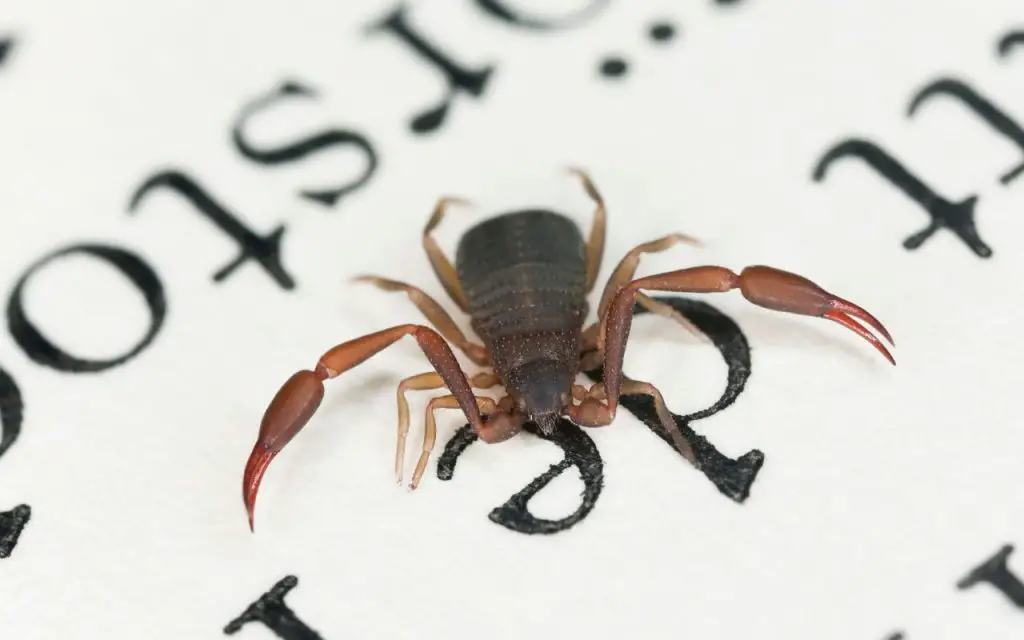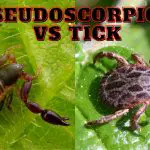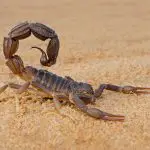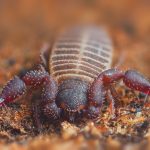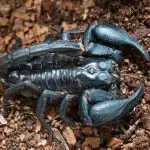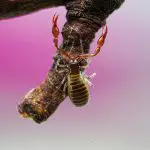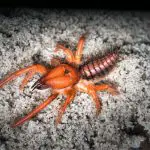They live all around the world, hiding in dark places and eating pests that would otherwise harm our food and goods – but what is a pseudoscorpion?
A pseudoscorpion is a tiny arachnid that thrives best in damp hidden spots in the house. They can also survive outdoors in warm but humid places such as beneath tree bark or under leaf waste. They are also known as book scorpions because you can often find them hiding between book pages, or false scorpions due to their close likeness to the actual scorpion.
Where are Pseudoscorpions Found?
Pseudoscorpions can survive in a range of habitats with a humid climate, which is why they are common worldwide. Like in Northern Ontario, you can find them in temperate regions and cold conditions. Scientists report over 430 genera and more than 330 species of Pseudoscorpions, and they are still discovering more.
Pseudoscorpions can find their way to your house without your knowledge since they are hitchhikers and jump on other giant arthropods for free transport.
While indoors, they hide in dark and humid areas such as basements, bathrooms, and wardrobes. You can also find them between book pages or inside cracks. The most common species you can find indoors is the house pseudoscorpion.
Additionally, some species prefer the outdoors, where they live in the open woods and gardens. They mostly hide under rotting leaves, tree barks, and other garden waste. They hunt and feed on tinier insects and insect larvae.
Suppose you have these small creatures in your house; you may not notice them until they increase in population and appear in the open, like on plain surfaces. Their minute size makes them difficult to see.
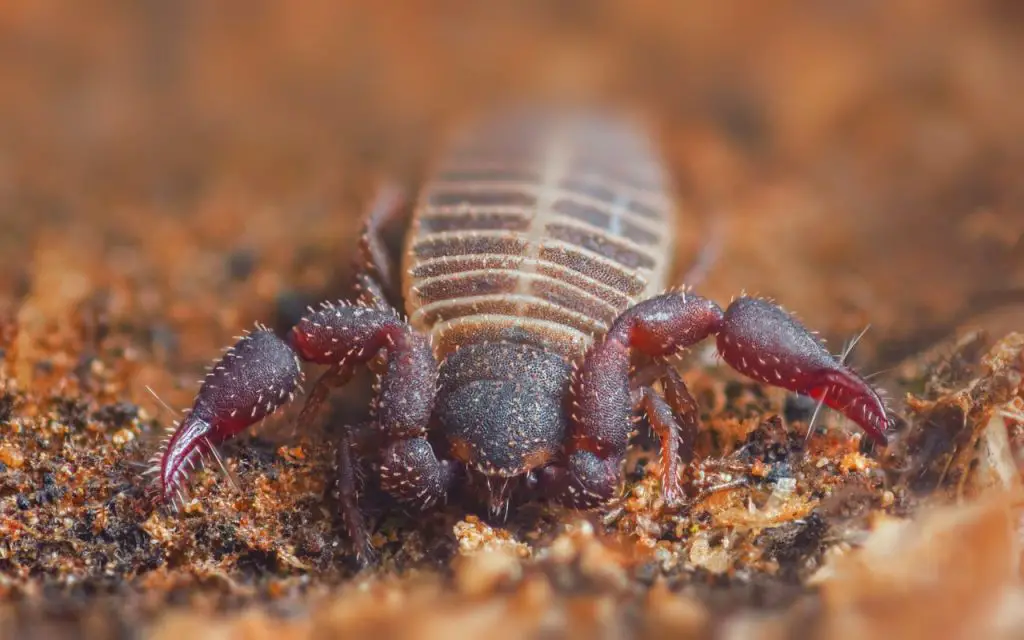
Do Pseudoscorpions Bite Humans?
A pseudoscorpion such as Chelifer cancroides, for example, is a tiny less than a ¼ inch creature that can neither bite nor sting. Their resemblance to the actual scorpion makes them appear dangerous to humans, but they don’t have stingers for injecting venom into their prey. They also do not pose any threat to your livestock or other properties.
How Can Pseudoscorpions Be Helpful to Humans?
If you have pseudoscorpion infestation for the first time, you may see them as a threat to your home. However, these creatures are harmless and valuable to human beings. When they exist indoors, they act as a natural pest control method as they feed on other tiny insects and insect larvae. They help keep your carpets and furniture insect-free by preying on carpet lice.
In addition, they protect you from skin infection and itching resulting from long storage of clothes as they feed on cloth moths.
Moreover, you can rest assured that Pseudoscorpions will feed on bedbugs and their larvae, saving you the trouble of seeking bug control.
Furthermore, outdoor Pseudoscorpions are helpful in protecting your crops from insect attacks. They do so by preying on crop insects such as mites and ants. Therefore, you do not need to stress yourself clearing these insects from your home.
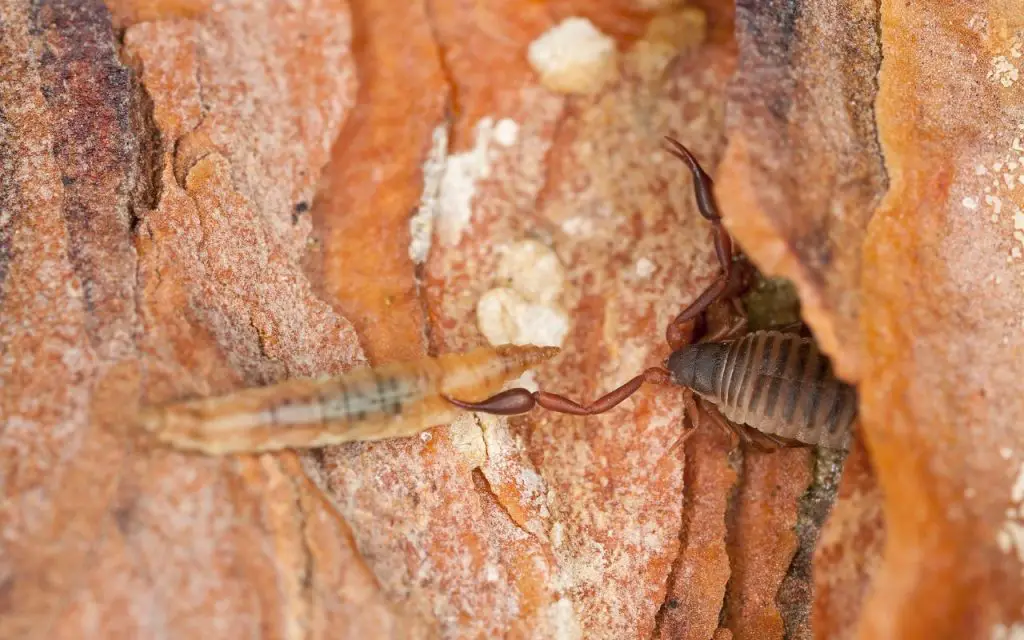
Pest species that Pseudoscorpions prey on
- Springtails (Collembola) – these tiny, wingless insects are common in soil and may damage plant roots.
- Mites – pseudoscorpions feed on a variety of mites, including spider mites, which can damage crops and ornamental plants.
- Booklice (Psocoptera) – these tiny insects are common in homes and can damage books, paper, and other materials.
- Thrips – pseudoscorpions may feed on thrips, which are small insects that can damage crops.
- Fungus gnats (Sciaridae) – the larvae of these small flies feed on freshly grown plant roots and can damage crops and houseplants.
- Spring cankerworms (Paleacrita vernata) – these caterpillars can defoliate trees and shrubs in the spring.
- Leafhoppers – these small insects can damage a variety of crops by feeding on plant sap.
- Scale insects – pseudoscorpions may feed on the soft-bodied nymphs of scale insects, which can damage crops and ornamental plants.
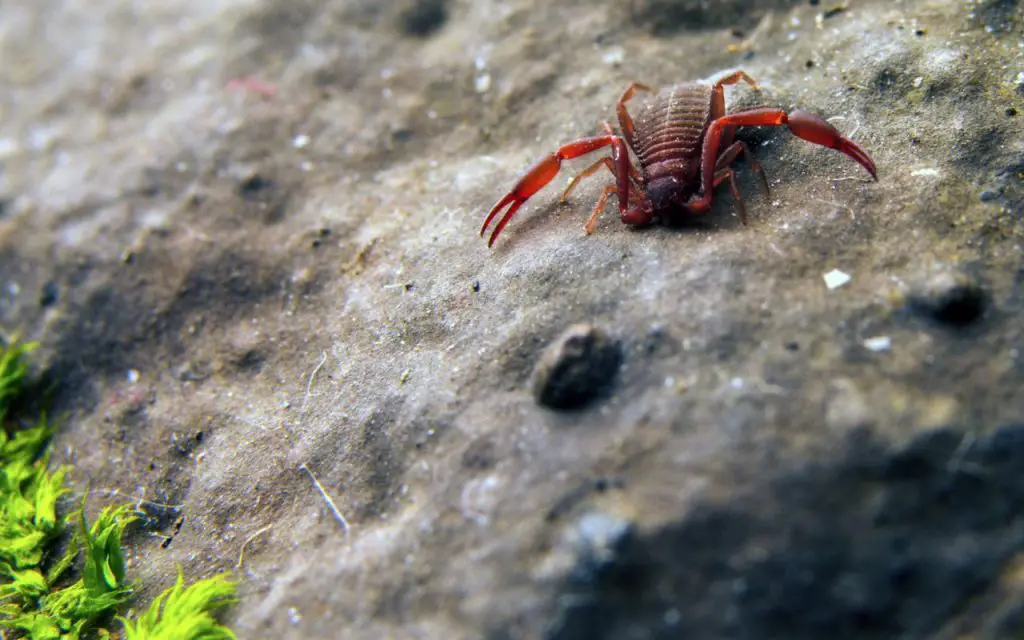
Can Pseudoscorpions Hurt You?
Although the pincers on Pseudoscorpions make them appear deadly, just like the scorpion, these animals are harmless. They have tiny, weak stingers that cannot hurt you by biting or stinging. The worst they can do is crawl on your skin; you may not feel it until you see it.
House Pseudoscorpion
Chelifer cancroides (L.), or house pseudoscorpion, is the most common species in many homes. It is rich mahogany in color and can grow up to about 3 to 4 mm. its most outstanding features are the one eye on either side of its cephalothorax and the segmented abdomen with twelve segments. It also has four pairs of legs that increase in length sequentially.
The curved body shape and the two pedipalps on the front make a house pseudoscorpion appear like a teardrop.
House Pseudoscorpions live in many habitats but appreciate most warm and humid environments. They hide in crevices, cracks, and under rocks and wood. They feed on other smaller insects by injecting venom that paralyzes their prey.
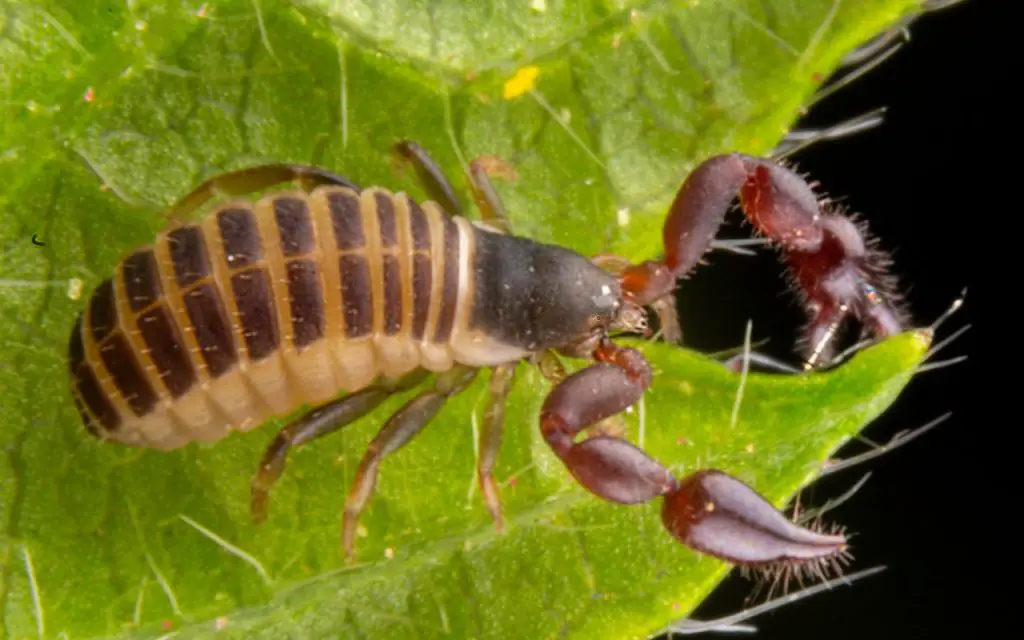
What Do Pseudoscorpions Do?
Pseudoscorpions have various hunting tactics they use to capture their prey. Some species use webs to entangle the prey before attacking. After constructing the web, they use vibrations from tapping the web edges to draw the insect closer and fold it so the prey cannot escape.
Once it has its prey, it uses its pincers to inject venom that paralyzes the prey. It then injects saliva to dissolve the food before feeding on the liquefied contents.
Are Pseudoscorpions Dangerous?
Pseudoscorpions are not dangerous to humans, livestock, or pets. Their appearance may make them look fearsome and a threat. However, the biggest worry is that their presence in your home can indicate a massive infestation of other harmful insects which they are after. The worst false scorpions can become a nuisance when they increase in population.
If you worry that you may have other insects besides Pseudoscorpions in your home, it would best to identify the type before they become a disaster. The best way to determine the Pseudoscorpion’s prey and deal with it is by calling a professional pest control service.
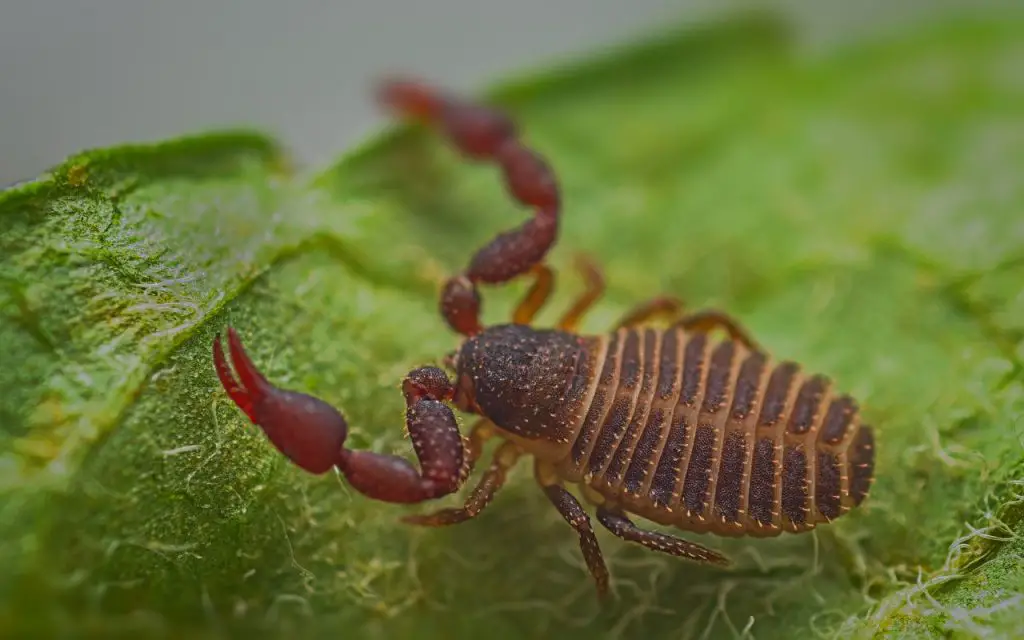
Can Pseudoscorpions be Helpful to Humans?
Pseudoscorpions can help humans in many ways. First, it helps in controlling other harmful pests, such as mites. If they lodge in your bedroom, they feed on moths and larvae in your stored clothes, protecting you from skin infections. You can also be safe with stored food since your home will be from ants and booklice.
Pseudoscorpion Ticks
It is easy to mistake Pseudoscorpions for ticks if you see them for the first time. The book scorpion has a few differentiating features to set it apart from ticks and the actual scorpion. It is tinier than a tick, which makes it hard to notice at a glance. In addition, while ticks can be a menace if they infest your home, Pseudoscorpions are harmless. Also, while you can find Pseudoscorpions only in dark, damp corners of the house, you can spot ticks in the open.
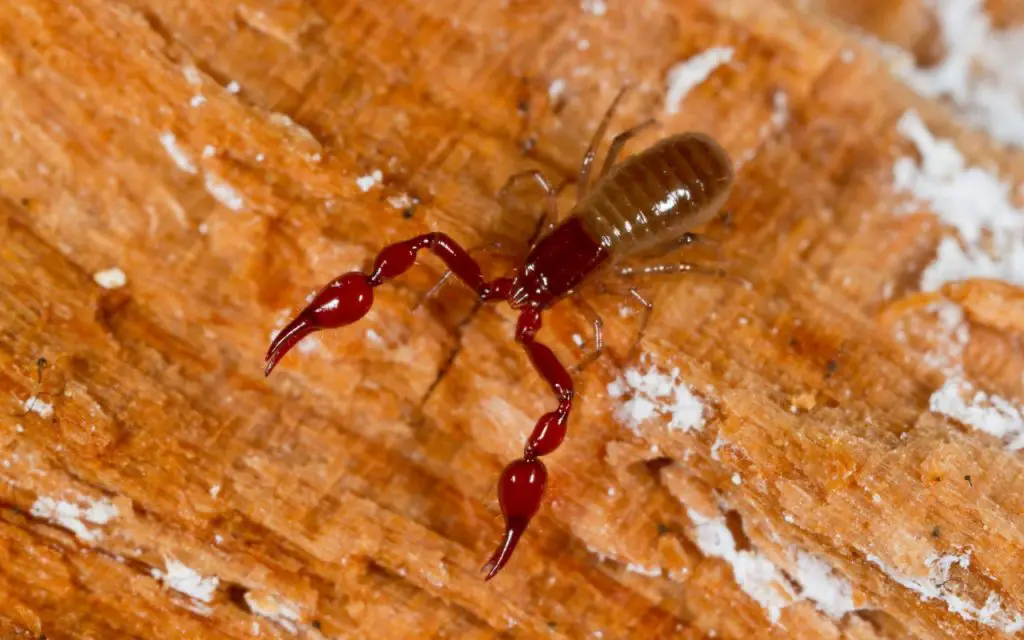
Can a Pseudoscorpion be considered a Tick?
A pseudoscorpion cannot be considered a tick since the two are different. A pseudoscorpion is almost smaller than 5mm, much smaller than a tick. Moreover, Pseudoscorpions spend their lives under leaf dirt, mulch, and other humid hideouts, while ticks are more in the open, where they attack pets and livestock.
Do Pseudoscorpions Bite?
Even though a pseudoscorpion looks more like a tiny scorpion, it can neither bite nor sting. Its stinger is minute and weak, approximately ¼ inch long. Furthermore, the primary significance of their pincer-like stingers is to sting and inject venom into their prey. You will only notice these minute creatures when they crawl on your skin, where they are also harmless.
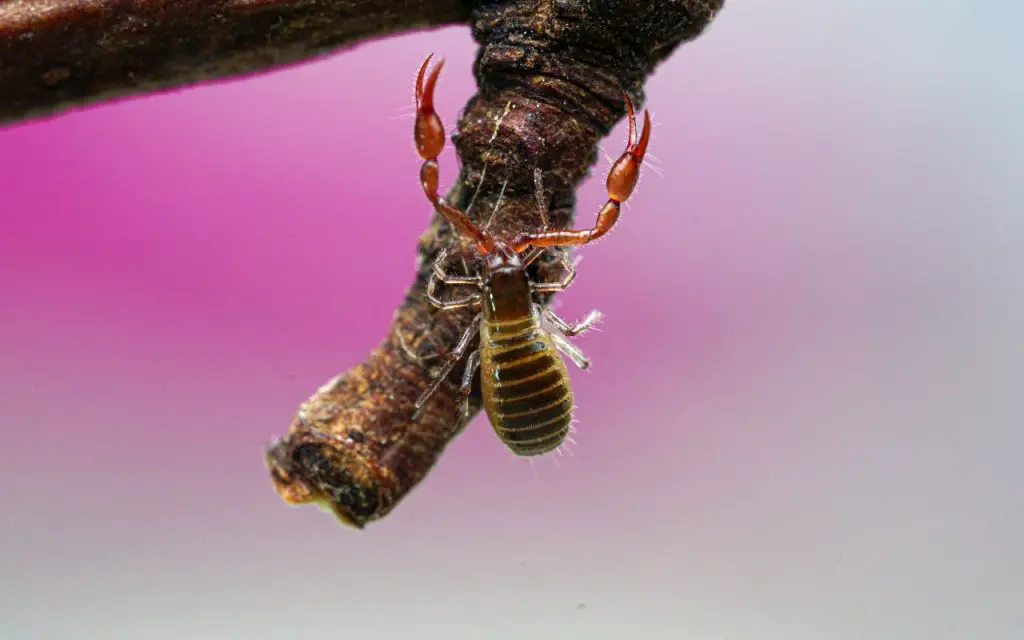
Pseudoscorpion Size
A mature pseudoscorpion can grow up to approximately 8 mm long, and the smallest is 2 mm. nonetheless, the size of these arachnids may vary depending on the species. For instance, a house pseudoscorpion, the most common species in homes, can grow up to 4 mm. It has eight legs that extend sequentially as it grows.
The mature house pseudoscorpion can spread its legs to make it appear larger, about seven to nine millimeters across.
Let’s take a look at some common pseudoscorpion species and how big they get:
| Species | Size (mm) |
|---|---|
| Chelifer cancroides | 5-8 |
| Neobisium carcinoides | 3-5 |
| Roncus lubricus | 2-3 |
| Garypus titanius | 3-4 |
| Withius piger | 2-4 |
| Paratemnoides nidificans | 2-4 |
| Allochernes wideri | 4-5 |
Pseudoscorpion Michigan
Michigan is home to many pseudoscorpion species. House pseudoscorpion, the most common species, survives the Michigan climate well, and you can easily find them in a large population in homes. They are widespread across many parts of Michigan. They use their pedipalps to sense and attack their prey since their vision is poor and unreliable in hunting.
Michigans have nothing to worry about these arachnids as they are harmless to property, pets, or humans. Their tiny pincers are too weak to sting and lack the tail stinger in the scorpion. Suppose you find them a nuisance in your house; physical removal is the most advisable control method.
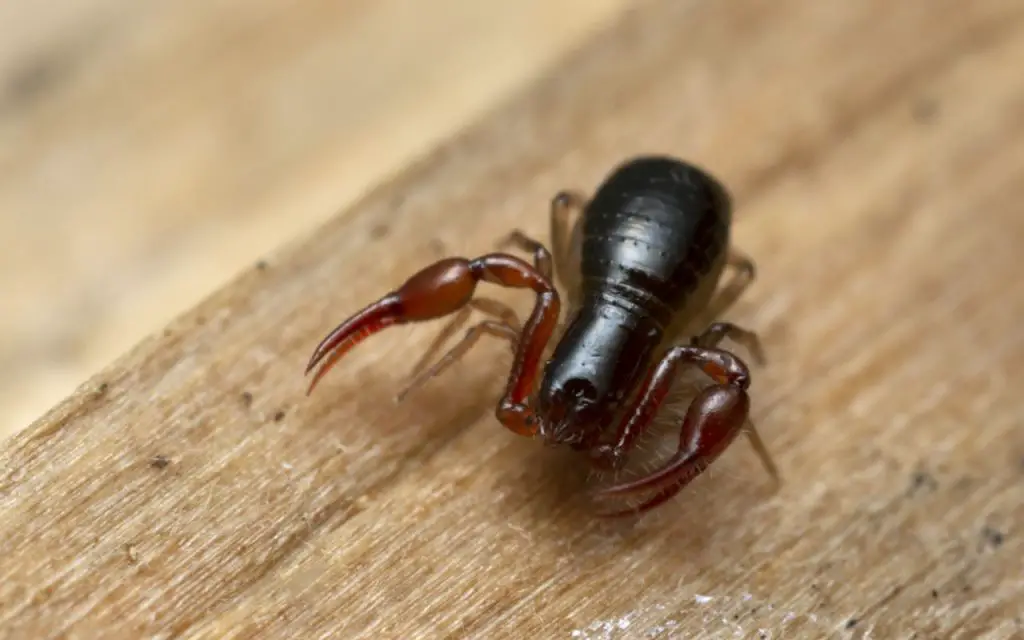
FAQ Relating to what is a Pseudoscorpion?
Do Pseudoscorpions Eat Bed Bugs?
Yes, Pseudoscorpions love to eat bed bugs. They are an ideal bedbug control method since they also eat the eggs before they hatch and increase the bedbug population. However, the presence of Pseudoscorpions alone is probably not enough to eradicate bed bugs. You should contact an exterminator if you want to make sure bed bugs are gone.
Do pseudoscorpions have venom?
Pseudoscorpions have venom in their pedipalps (pincers), unlike scorpions which have it in their tails. Nonetheless, the venom is produced in such tiny quantities that there’s no way it could ever harm a human. In fact, they couldn’t even pierce human skin if they tried. Pseudoscorpions are only dangerous to small bugs.

